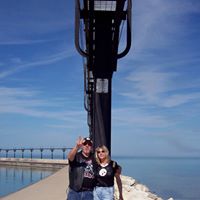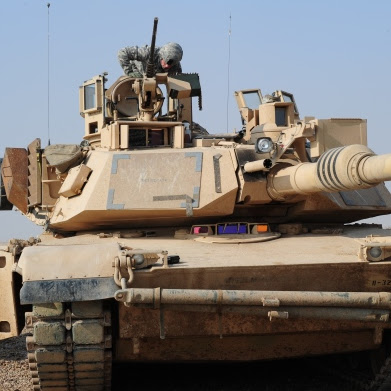Gary Francis Vaughan
age ~53
from Denver, CO
- Also known as:
-
- Gary F Vaughan
- Gary F Vaughn
Gary Vaughan Phones & Addresses
- Denver, CO
- N2346 Vaughan Rd, Waupaca, WI 54981 • (920)8673246
- 220 Princess Caroline Ct, Edinburg, VA 22824
- Richardson, TX
- Downers Grove, IL
- Newark, NJ
Work
-
Company:Vaughan group
-
Address:6015 Azalea Ln, Dallas, TX 75230
-
Phones:(214)3484200
-
Position:President
-
Industries:General Contractors-Single-Family Houses
Us Patents
-
Using Phase Difference To Determine Valid Neighbors
view source -
US Patent:7983622, Jul 19, 2011
-
Filed:Mar 12, 2008
-
Appl. No.:12/047081
-
Inventors:Gary Vaughan - Centennial CO, US
-
Assignee:Sprint Spectrum L.P. - Overland Park KS
-
International Classification:H04B 17/00
-
US Classification:455 6716, 455 6711, 455304
-
Abstract:A method and system is disclosed for using phase shift to determine valid neighbors in a wireless communication system. A phase difference, measured at an access terminal, between an expected phase and an observed phase of a pilot signal from a given wireless service site is used to determine a differential distance. The differential distance corresponds to a difference between (i) the distance from the access terminal to the given wireless service site and (ii) the distance from the access terminal to a serving wireless service site. The expected phase is taken to be that of a known neighbor site of the access terminal, based on a postulation that the given site is the neighbor site. Upon a determination that the differential distance does not exceed a threshold distance, the given wireless service site is confirmed as being the neighbor site.
-
Assessing The Comparative Performance Of Telecommunication Service Areas
view source -
US Patent:8145186, Mar 27, 2012
-
Filed:Mar 31, 2008
-
Appl. No.:12/058815
-
Inventors:Gary Francis Vaughan - Centennial CO, US
-
Assignee:Sprint Communications Company L.P. - Overland Park KS
-
International Classification:H04M 11/00
H04W 40/00
H04W 72/00 -
US Classification:455405, 455446, 455448, 4554522
-
Abstract:The present invention provides a method, system, and software product for assessing the performance of at least one telecommunications service area wherein the method comprises providing for the telecommunications service area performance information comprising service area rate of blocked calls, service area rate of dropped calls, and service area number of attempted calls. Additionally, the performance information for the service area to generate a Performance Value therefore. The present invention further comprises comparing the Performance Values of at least first and second service areas to provide a basis for making decisions regarding maintenance, repair, or replacement activities of hardware and software relating to a service area.
-
User Controlled Base Station Selection
view source -
US Patent:8588776, Nov 19, 2013
-
Filed:Jan 15, 2009
-
Appl. No.:12/354093
-
Inventors:Gary Francis Vaughan - Centennial CO, US
-
Assignee:Sprint Communications Company L.P. - Overland Park KS
-
International Classification:H04W 4/00
-
US Classification:4554352, 455445, 4554565, 455421, 37039521, 3703952
-
Abstract:A communication system for controlling with which base station a mobile station exchanges user communications. A first base station of a plurality of base stations with which the mobile station communicates is configured to receive a user selection from a user. The user selection indicates that the mobile station is near the first base station. In response to the user selection, the first base station transfers a notification message indicating that the mobile station is nearby the first base station. A communication control system receives the notification message from the first base station. In response to receiving the notification message, the communication control system transfers a control message for delivery to the mobile station to limit the mobile station to exchanging user communications only with the first base station. The first base station exchanges user communications with the mobile station.
Resumes

Gary Vaughan
view source
Gary Vaughan
view source
Gary Vaughan
view source
Gary Vaughan
view source
Construction Engineer
view sourceWork:
Fargotrade
Construction Engineer
Construction Engineer

Gary Vaughan
view source
Gary Vaughan
view sourceLocation:
United States
Name / Title
Company / Classification
Phones & Addresses
Owner
Vaughan Pharmacy Design Professionals, Inc.
Store Fixtures
Store Fixtures
2700 Youngfield St STE 200, Lakewood, CO 80215
(303)8095761, (303)2020544
(303)8095761, (303)2020544
President
Vaughan Group
The Vaughan Group
Design & Build Contractor
The Vaughan Group
Design & Build Contractor
11700 Preston Rd., Suite 660-190, Dallas, TX 75230
(214)3484200
(214)3484200
President
Vaughan Group
General Contractors-Single-Family Houses
General Contractors-Single-Family Houses
6015 Azalea Ln, Dallas, TX 75230
Website: thevaughangroup.com
Website: thevaughangroup.com
Certified Graduate Remodeler Cgr
Vaughan Group, The Inc
General Contractors-Single-Family Houses
General Contractors-Single-Family Houses
11700 Preston Rd Ste 810, Dallas, TX 75230
President
Vaughan Group, The Inc
General Contractors-Single-Family Houses
General Contractors-Single-Family Houses
11700 Preston Rd Ste 810, Dallas, TX 75230
President
33 Keep IT Real LLC
General Contractors-Single-Family Houses
General Contractors-Single-Family Houses
11700 Preston Rd Ste 660, Dallas, TX 75230
Treasurer, President, Certified Graduate Remodeler Cgr
VAUGHAN GROUP, INC
Residential Remodelers
Residential Remodelers
11700 Preston Rd SUITE 660-190, Dallas, TX 75230
6015 Azalea Ln, Dallas, TX 75230
(214)3484200
6015 Azalea Ln, Dallas, TX 75230
(214)3484200
Director, Secretary
T.P.G. Enterprises, Inc
Business Services
Business Services
PO Box 2466, Rockwall, TX 75087
628 Big Oak Ct, Rockwall, TX 75087
PO Box 741764, Dallas, TX 75374
628 Big Oak Ct, Rockwall, TX 75087
PO Box 741764, Dallas, TX 75374
Vehicle Records
-
Gary Vaughan
view source -
Address:220 Princess Caroline Ct, Edinburg, VA 22824
-
VIN:1N6AD07W27C447065
-
Make:NISSAN
-
Model:FRONTIER
-
Year:2007
Classmates

Gary Vaughan (Thejedimast...
view sourceSchools:
Wagner High School Clark Afb OR 1988-1992
Community:
Nancy Baker, Douglas Glover, Jenny Cranfill, R Henze, William Hayes

Gary Vaughan
view sourceSchools:
Forest Glen High School Suffolk VA 1987-1991
Community:
Felicia Hill, Regina Jeanie, Julie Drawdy

Gary Vaughan
view sourceSchools:
Sam Houston Elementary School Dallas TX 1967-1970, Calliet Elementary School Dallas TX 1970-1973, Cary Junior High School Dallas TX 1973-1976
Community:
Ricardo Valtierra, Susan Owens, Rafael Arauz

Gary Vaughan
view sourceSchools:
Inglenook High School Toronto Morocco 1974-1978

Gary Vaughan
view sourceSchools:
Washington Irving Elementary School Durant OK 1957-1962
Community:
Sharon Evans, Jim Murphree, Carolyn Meeks, Michael Whitlock, Pat Moore, Viv Williams, Lizabeth Richardson, James Fuqua, Connie Mcwright, Mike Beavers

Gary Vaughan
view sourceSchools:
Circle High School Circle MT 1959-1963
Community:
Terry Levalley, Mark Fleet, Brent Ross, Paula Preston, Jerry Meissner

Gary Vaughan
view sourceSchools:
Oklahoma Military Academy Claremore OK 1953-1957
Community:
Loren Hale, Everett Stewart, Russell Joyner, Theodore Frizell, David Leffel, Robert Lee, Jon Forrest, Justin Wie, Larry Burton, Tom Orndorff, Jack Gilmore

Gary Vaughan, Hialeah Hig...
view sourcePlaxo

Gary Vaughan
view source
Gary Vaughan
view sourceMD at Filmthink Pty Ltd Producer/director/DOP. Corporate communications. HD digital Production. Studio with green screen & Edius post-production.
Myspace
Youtube
Flickr

Gary Vaughan
view source
Gary Vaughan
view source
Gary Vaughan
view source
Gary Lee Vaughan
view source
Gary Vaughan Logan
view source
Gary Vaughan
view source
Gary Vaughan
view source
Gary Vaughan
view sourceGoogleplus

Gary Vaughan
Work:
Tutt-bryant W A - Trailer operator
Education:
Glenfield college - Eating lunch
Relationship:
Single
About:
Love australia H A T E new zealand (shit hole)
Bragging Rights:
I hav 3 gr8 sons Aaron - Kyle & Rusty

Gary Vaughan
Work:
Unipres
Education:
Newcastle college

Gary Vaughan

Gary Vaughan

Gary Vaughan

Gary Vaughan

Gary Vaughan

Gary Vaughan
Get Report for Gary Francis Vaughan from Denver, CO, age ~53

















